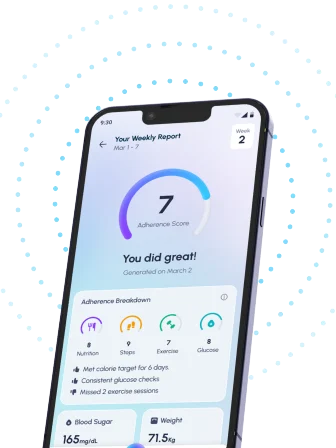Table of Contents
- Chilblains in Diabetics: Recognizing the Symptoms
- Understanding Chilblains: Causes and Risk Factors for Diabetics
- Diabetic Chilblains: Prevention and Treatment Guide
- How to Identify and Manage Chilblains if You Have Diabetes
- Chilblains vs. Other Foot Problems: A Diabetic’s Guide
- Frequently Asked Questions
- References
Winter’s chill can bring more than just a shiver for people with diabetes. Understanding chilblains is crucial for managing your health, as these painful, itchy skin lesions can be particularly problematic. This guide, Understanding Chilblains: A Diabetic’s Guide to Symptoms and Causes, is designed to equip you with the knowledge you need to recognize, prevent, and treat chilblains effectively. We’ll explore the underlying causes, delve into the telltale signs, and provide practical advice for keeping your feet and hands healthy throughout the colder months. Let’s dive in and learn how to stay comfortable and avoid unnecessary discomfort.
Chilblains in Diabetics: Recognizing the Symptoms
Diabetes significantly increases the risk of various foot complications, including the often-overlooked chilblains. Nearly 15% of diabetics experience foot ulcers in their lifetime, highlighting the importance of early detection and prevention of related issues like chilblains. These painful, itchy lesions are a particular concern in individuals with diabetes due to the already compromised circulatory system and heightened vulnerability to infection.
Identifying Chilblains in Diabetic Patients:
Chilblains manifest as red, swollen, and intensely itchy patches, usually on the toes, fingers, ears, and nose. In diabetic individuals, these symptoms might be more pronounced or present differently due to nerve damage (neuropathy), a common diabetic complication. Reduced sensation can mean a diabetic might not notice the initial symptoms, leading to delayed treatment and potentially worsening the condition. The affected areas might feel cold and numb, then become intensely itchy and painful as they warm up. In severe cases, blisters and ulcers can develop, increasing the risk of infection—a serious threat for those with diabetes. It’s crucial to differentiate chilblains from other foot problems, as early identification is key in preventing complications. Managing diabetes effectively is also crucial; for example, understanding what foods are safe to eat, such as whether Can Diabetics Eat Cheerios? can help in overall health management.
Differentiating Chilblains from Other Foot Problems in Tropical Climates:
In Indian and tropical countries, the prevalence of fungal infections and other skin conditions is high. Recognising chilblains’ specific symptoms is vital to avoid misdiagnosis. It’s important to seek professional medical advice if you experience any unusual skin changes on your extremities, especially if you have diabetes. While chilblains are often associated with cold weather, even in warmer climates, fluctuations in temperature and humidity can still trigger them. Diabetics living in tropical regions should pay particular attention to foot hygiene and regularly inspect their feet for any signs of redness, swelling, or pain. Prompt attention to these symptoms can significantly reduce the risk of serious complications. Remember that managing your diabetes involves many factors, and understanding supplements like Can a Diabetic Take Shilajit? can be important for some.
Understanding Chilblains: Causes and Risk Factors for Diabetics
Chilblains and Diabetes: A Concerning Combination
Chilblains, characterized by itchy, painful, and inflamed skin on the extremities, are a common concern, particularly in individuals with diabetes. While anyone can experience chilblains, those with diabetes face a heightened risk due to several factors. Poor circulation, a frequent complication of diabetes, significantly contributes to the development of chilblains. Reduced blood flow to the hands and feet makes these areas more susceptible to cold-induced inflammation. Moreover, nerve damage (neuropathy), another common diabetic complication, can further exacerbate the issue, as individuals may not feel the early symptoms of chilblains, leading to delayed treatment and potentially more severe consequences. Maintaining healthy blood sugar levels, as advised by your doctor, is crucial in mitigating these risks. Remember, managing your diabetes effectively is paramount in preventing and managing complications like chilblains.
Environmental Factors and Diabetic Chilblains
In Indian and tropical countries, chilblains might seem less prevalent due to the warmer climate. However, even in these regions, exposure to sudden drops in temperature, such as air conditioning or using cold water for extended periods, can trigger chilblains in individuals with diabetes. Furthermore, the dampness often present in many tropical climates can also worsen the condition. Therefore, individuals with diabetes in these regions should be particularly vigilant about maintaining foot and hand warmth and dryness. Simple measures such as wearing socks even in warm weather, and avoiding prolonged exposure to cold surfaces, can help significantly. Proper foot care is vital, including regular inspection for any signs of chilblains or other foot problems.
Managing Chilblains: Practical Tips for Diabetics in Tropical Climates
While managing blood sugar levels remains the cornerstone of diabetes management, adopting preventive measures is equally crucial to avoid chilblains. Regular exercise, maintaining a balanced diet (including the recommended 45–60 grams of carbs per meal, depending on individual needs), and wearing appropriate clothing in varying weather conditions are key. Consult your doctor or a podiatrist promptly if you experience any symptoms of chilblains. Early diagnosis and treatment can significantly reduce discomfort and prevent long-term complications. Remember, proactive care is the best defense against chilblains and other diabetic-related issues, particularly in diverse climates. Maintaining a balanced diet is crucial, and understanding the impact of different foods is important. For example, you might want to learn more about Are Chickpeas Good for Diabetics? and Can Diabetics Eat Raisins? Learn About Their Impact.
Diabetic Chilblains: Prevention and Treatment Guide
Diabetic neuropathy, affecting 30-50% of patients, can significantly increase the risk of chilblains, particularly in individuals living in tropical and subtropical climates like those found across India. These painful, itchy skin lesions often appear on the extremities, further complicating mobility issues already present in some diabetics. Understanding how diabetes interacts with chilblain development is crucial for effective prevention and treatment.
Understanding the Risk Factors
In warm and humid climates, chilblains might seem unexpected. However, poor circulation, a common complication of diabetes, can make the body’s extremities more susceptible to cold-induced inflammation, even in relatively warm temperatures. The nerve damage associated with diabetic neuropathy can also reduce sensation, delaying the recognition of early chilblain symptoms. This means a diabetic individual might not notice the initial signs, leading to potentially more severe complications. Regular foot checks are vital for early detection. For more tips on maintaining healthy feet, check out our guide on Top 5 Foot Care Tips for Diabetics | Easy Steps to Healthy Feet.
Prevention Strategies for Indian Climates
Prevention in tropical regions focuses on maintaining good blood sugar control and protecting extremities from temperature fluctuations. This includes wearing appropriate footwear, even indoors, to avoid chilling. Regular foot care, including moisturizing and gentle massage, improves circulation. Maintaining a healthy weight and incorporating regular exercise (as advised by your doctor) also improves circulation, reducing the risk. Consult your physician to manage your diabetes effectively and mitigate the risk of complications like chilblains. Remember that proper diet plays a crucial role in managing diabetes; refer to our Diet Chart for Diabetic Patients to Control Diabetes for guidance.
Treatment and Management
If chilblains develop, prompt treatment is essential. This often involves keeping the affected area warm and dry. Over-the-counter creams and ointments can help soothe symptoms. However, always consult a doctor or podiatrist for diagnosis and treatment, especially if you have diabetes. Ignoring chilblains can lead to secondary infections, delaying healing and potentially worsening existing diabetic complications. Early intervention is key to managing this condition effectively.
How to Identify and Manage Chilblains if You Have Diabetes
Chilblains, also known as pernio, are a common problem in colder climates, but even in tropical and Indian countries, individuals, particularly those with underlying health conditions like diabetes, can experience them. The often-overlooked fact that 50% of diabetes cases worldwide are undiagnosed highlights the importance of understanding this condition and its potential impact. This is especially crucial because individuals with diabetes may experience delayed healing and increased susceptibility to infections, potentially making chilblains more severe.
Recognizing Chilblains: Symptoms to Watch For
Chilblains typically appear on the extremities, like fingers, toes, ears, and nose, as itchy, red, and swollen patches. They can be painful and sometimes blister or ulcerate. In individuals with diabetes, these symptoms might be less noticeable initially or present differently due to compromised nerve function (neuropathy), a common complication of diabetes. Therefore, it’s crucial to monitor your extremities regularly and seek medical advice if you notice any unusual changes. In warmer climates, chilblains might develop in response to sudden temperature drops, even if not severely cold.
Managing Chilblains: Practical Advice for Diabetics
Managing chilblains involves protecting your extremities from cold and dampness, wearing warm socks and gloves, and avoiding tight clothing that restricts circulation. Maintaining good blood sugar control is essential, as poor circulation associated with diabetes can worsen chilblains. Regular foot care, including gentle washing and thorough drying, is crucial to prevent infections. If you experience chilblains, consult your doctor or podiatrist promptly, especially if you have diabetes. They can advise you on appropriate treatment and help prevent complications. Early intervention is key to minimizing discomfort and avoiding potential long-term issues. Remember that making 5 Common Mistakes People Make in Managing Diabetes can exacerbate conditions like chilblains.
Seeking Help in India and Tropical Countries
In India and other tropical countries, while chilblains might be less prevalent, they can still occur in higher altitude regions or during unexpectedly cold periods. If you suspect you have chilblains, especially with diabetes, seek immediate medical attention. Consult your local doctor or visit a diabetes clinic for proper diagnosis and management. Remember, early detection and appropriate treatment are vital in preventing complications and ensuring your overall well-being. As you age, managing diabetes becomes increasingly complex, so understanding the challenges and solutions for managing diabetes as you age is also crucial.
Chilblains vs. Other Foot Problems: A Diabetic’s Guide
Differentiating Chilblains from Other Foot Issues
Diabetics, particularly in humid tropical climates like those prevalent across India and other Southeast Asian nations, often experience various foot problems. It’s crucial to distinguish chilblains from other conditions, as improper treatment can worsen existing complications. Chilblains, characterized by itchy, painful, and inflamed skin on the toes and heels, are triggered by exposure to cold and dampness followed by warming. This is different from diabetic neuropathy, which causes numbness and tingling, or foot infections, marked by swelling, redness, and pus. Over 80% of Type 2 diabetics have insulin resistance, a condition that can impact circulation and increase susceptibility to both chilblains and more serious foot problems. Understanding the specific cause is vital for effective management.
Recognizing Chilblains in a Tropical Context
While less common in consistently warm climates, chilblains can still occur in tropical regions, especially in areas with high humidity and fluctuating temperatures. Air conditioning, for instance, can create localized cold spots, triggering chilblains in individuals with compromised circulation, a common consequence of diabetes and insulin resistance. Pay close attention to any unusual redness, swelling, or itching on your feet, particularly after exposure to cool environments. The symptoms may be less severe in some than others, but prompt identification is key. Early detection and treatment are critical to prevent complications and maintain foot health. This is especially important given that Can Diabetes Cause Heel Pain?, a question many diabetics struggle with.
Seeking Professional Help
If you suspect chilblains or any other foot problem, seek immediate advice from a podiatrist or your doctor. Regular foot checks are essential for people with diabetes, especially those living in tropical or subtropical regions where infections can thrive. Don’t hesitate to contact your healthcare provider if you have any concerns. Proper diagnosis and management can help prevent serious complications and improve your overall quality of life. Remember, Are Cold Feet a Symptom of Diabetes? is a question worth considering as cold feet can sometimes be an early warning sign of circulatory issues.
Frequently Asked Questions
Q1. What are chilblains and why are diabetics at higher risk?
Chilblains are painful skin lesions that appear on the extremities. Diabetics are at increased risk due to poor circulation and nerve damage (neuropathy), which reduces sensation and slows healing.
Q2. What are the symptoms of chilblains?
Symptoms include red, swollen, and itchy patches of skin. These can progress to blisters or ulcers. Because of neuropathy, diabetics might not notice these changes until they’re more serious.
Q3. Can I get chilblains even if I live in a warm climate?
Yes, while chilblains are associated with cold weather, they can occur in warmer climates due to temperature fluctuations and humidity. It’s important to be vigilant year-round.
Q4. How can I prevent or manage chilblains as a diabetic?
Effective diabetes management is key. This includes maintaining healthy blood sugar levels, practicing good foot care (regular inspection), and wearing protective clothing in cold or damp conditions. Prompt medical attention is crucial if you suspect chilblains.
Q5. How can I tell if my foot problem is chilblains or something else?
It’s essential to see a doctor for diagnosis. Many foot problems can mimic chilblains, and a professional can distinguish them, preventing misdiagnosis and complications.
References
- A Practical Guide to Integrated Type 2 Diabetes Care: https://www.hse.ie/eng/services/list/2/primarycare/east-coast-diabetes-service/management-of-type-2-diabetes/diabetes-and-pregnancy/icgp-guide-to-integrated-type-2.pdf
- Children with Diabetes : A resourse guide for families and school. : https://www.health.ny.gov/publications/0944.pdf




